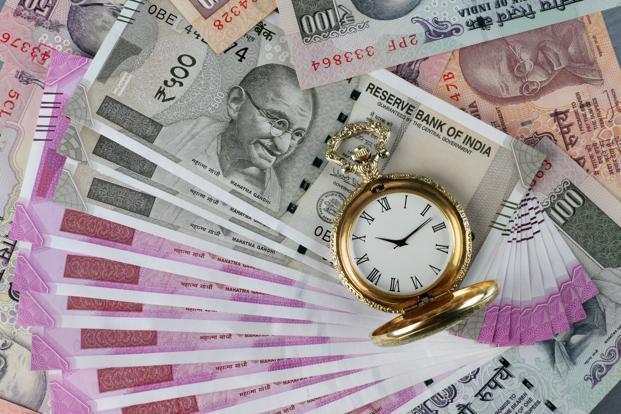- November 20, 2017
- Posted by: peakalpha2023
- Category: Livemint

Unless you’re a cashier in a bank, there is no compelling reason why your relationship with cash should be as clingy as that of iron to a magnet. Yet, I see this perplexing phenomenon occurring time and again in many investment portfolios.
People normally hold financial assets in these buckets—equity, debt, and cash. Cash can be held in current and savings accounts, short-term deposits, mobile wallets, liquid funds and in brokerage accounts, in addition, of course, to physical cash.
Holding on to cash makes sense for meeting routine expenses, imminent purchases, vacations or emergency funds. Some goals may occur in a short period of time, such as putting down a deposit for a house or car purchase. Clearly, you should not invest such funds in anything that could erode capital in that time. But apart from keeping money as cash to fund imminent expenses, the rest of your portfolio should be working hard for you.
While cash is perceived as risk free, the truth is that you are simply exposing yourself to a different kind of risk – inflation risk. The money in a savings account grows at a lesser rate than inflation, thereby losing purchasing power every year.
Let’s say you wanted to buy a watch that costs you Rs10,000 today. For some reason you postpone your decision to buy it now and instead hold the money in a savings account at 3.5% interest. A year later, your money will be worth Rs10,350. Meanwhile, the cost of the watch has gone up by 6% to Rs10,600. You find you can’t afford the watch anymore. You only have 97.7% of the money needed, your purchasing power has eroded by 2.3%. Continue this habit for 5 years, and your purchasing power will diminish by 11.25%. If you’re in the 30% tax bracket, the picture looks worse. The loss in purchasing power is 3.3% in the first year and 15.6% after 5 years. And if you hold cash in hand, that translates to a loss of 5.6% in one year and 25.2% in 5 years. Clearly, after factoring inflation and taxes, cash gives you a negative, diminishing return the longer you cling to it.
Cash is what happens when you don’t invest. There is a fundamental difference between saving and investing. Saving is what happens passively, without your intervention. You earn a Rs100, spend an Rs80, and save a Rs20. This Rs20 may lie in the savings account. Investing is when you actively look for better options to make the 20 grow better than inflation. If you don’t make it grow, you may not lose capital, but you may not be able to retire on your own terms either.
I see cash accumulating in portfolios primarily because of the following reasons.
1. Investors panic and sell equity during a downturn and don’t know what to do with the money.
2. They are scared that markets have climbed too high and are nervous investing the money.
3. They are timing the market and waiting for an opportune time to enter, meanwhile funds are idling in the savings or the brokerage account.
4. They are holding money to buy the perfect home, but the dream home is proving elusive.
5. They get dividends and interest payments that they don’t need.
6. They are simply unaware that their current accounts, savings accounts and liquid funds make up more than 30% of their financial assets.
You will notice that most of the reasons why people hold on to cash are driven by emotion—either fear or greed or plain lethargy. History has proven time and again that we are bad at timing the market. It is time in the market and not timing the market that gets us returns.
The problem occurs when the market correction becomes elusive and you have stayed far too long in a low-return product. If the market is low today, you will wait for it to get lower. If it is high today, you feel you’ve lost the opportunity because it was cheaper earlier. Either way, you lose. The opportunity cost of holding cash often outweighs short-term risks of investing. Compounded over a period, even small amounts in cash for long periods of time pull down portfolio returns.
Think of it this way. Suppose you prefer maintaining a balance of Rs5 lakh in your savings account because you sleep better at night knowing your money is ‘safe’. At the end of 5 years, you will have Rs5.90 lakh in your account (assuming zero tax and 3.5% interest). If you had invested the same amount in a balanced fund, you would have Rs7.70 lakh, 5 years later (zero tax and 9% assumed compounded annual growth rate), a big difference of Rs1.80 lakh. Investing in the balanced fund could mean losing money too, especially in the initial years, but the risk of losing money diminishes over time.
Savvy investors keep emotions aside. They have their investment plans smartly chalked out and work to implement the plan systematically, month on month, year on year. Income and expenses are carefully drawn up and monthly surpluses calculated; goals are flagged as short, medium and long term. Money is invested or withdrawn in a tax efficient manner according to the right level of risk, asset allocation and tenure. Excess cash find no place in such portfolios because it is always earmarked to a goal.
A medium- to long-term goal ensures that cash is invested immediately regardless of market conditions. The money may have been invested when the market was cheap, expensive or somewhere in between. But at least the money was put to good use. The market choppiness, the portfolio swings, the short-term losses will all be worth it when you hand over the tickets for that dream Mediterranean cruise to your beaming family.
Priya Sunder is director and co-founder of PeakAlpha Investments.
